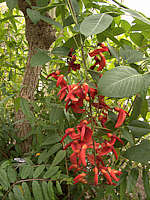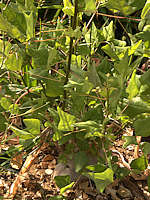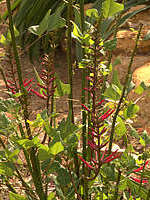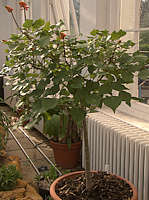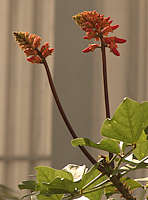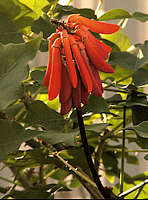|
The Fabaceae is a very large and important family of 650 genera and over 18,000 species of dicotyledenous flowering herbs and trees, commonly called legumes or pulses.
 dish of pulses
The bean family is numerically the third largest after the Orchidaceae and Asteraceae respectively. Flowers have five petals and a superior ovary. One of the unifying characteristics is the dehiscent seed pod with seeds present in a row, sometimes in individual sections. Flowers have 10 or more stamens. A common feature is symbiosis with nitrogen-fixing bacteria, which reside in special root nodules and fix atmospheric nitrogen to nitrate, assisting growth on poor soils. When used as a green manure legumes add nitrogen to the soil.
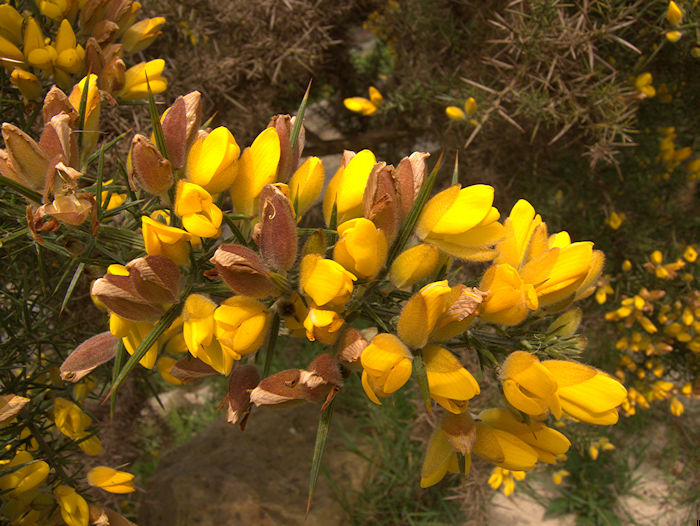 Ulex europaeus Ulex europaeus (Gorse)
Within Europe and North Africa, the genus Ulex includes about 20 species of thorny shrubs of the ever-flowering Gorse or Furze. Country folk say that "When gorse is out of bloom, kissing's out of season".
The Fabaceae are of great agricultural importance as food crops (beans, lentils, peanuts, peas, soybeans) and fodder crops or green manure (alfafa, clover, lupins, soybean). However, many species contain toxic lectins and other poisons in their seeds. Even with edible pulses, it is advisable to boil them vigorously to destroy their lectins. The family includes many ornamental (Acacia, Laburnum, Mimosa) and xerophytic trees (Acacia, Mesquite, Paolo Verde), distributed across both the Old and New Worlds.
Succulent genera: Cassia, Dolichos, Elephantorrhiza, Erythrina, Neorautenania, Senna.
|
Erythrina Linnaeus 1753 (Coral Trees)
Greek: erythros = red
This family includes around 130 species of shrubby caudiciforms and large trees, some pachycaul and with thorns. They are found from the Southern USA to Argentina, Hawaii, and in tropical and sub-tropical countries worldwide including Africa and Asia. The ability of the seed of Erythrina fusca (sea beans) to remain viable in seawater probably explains its distribution in both Old World and New World countries.
As legumes, these plants and trees host nitrogen-fixing bacteria in root nodules. Many species have bright red or orange nectar-rich flowers followed by pods of seeds. Both nectar and seeds sustain many species of bird. However, the seeds of many species contain toxic alkaloids and should not be eaten by mammals. Despite this, several species are considered to have medicinal properties.
|





